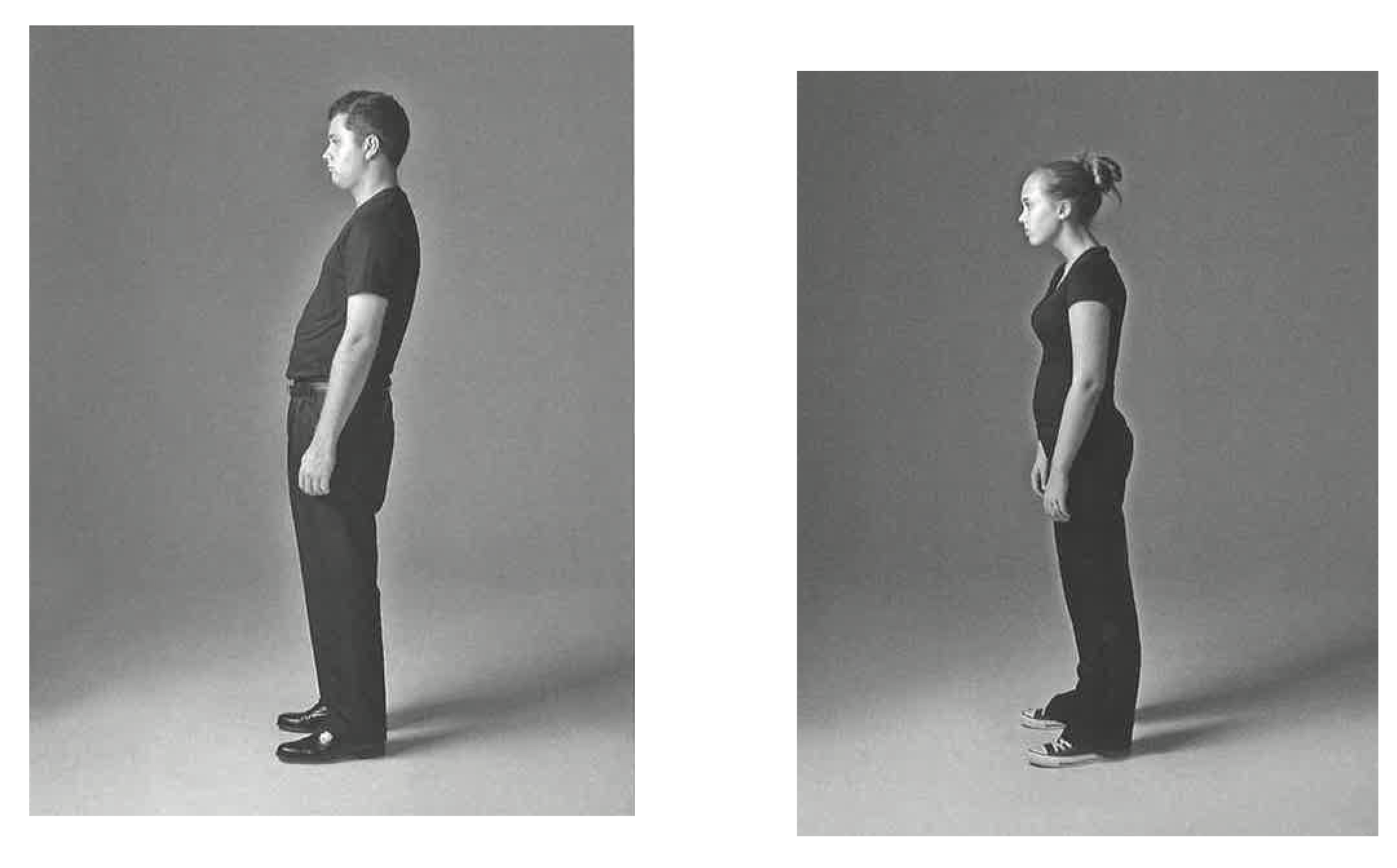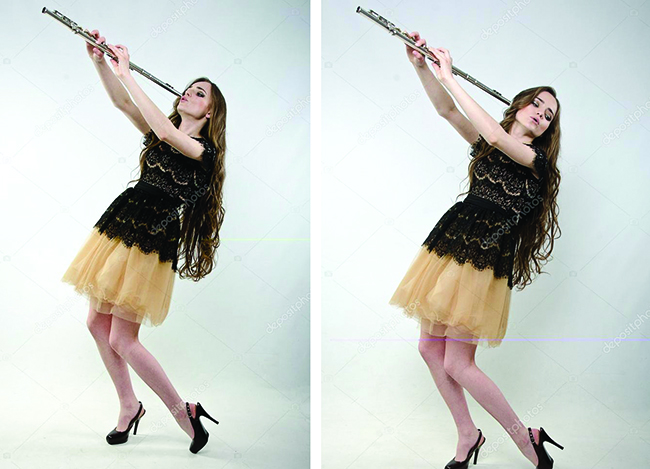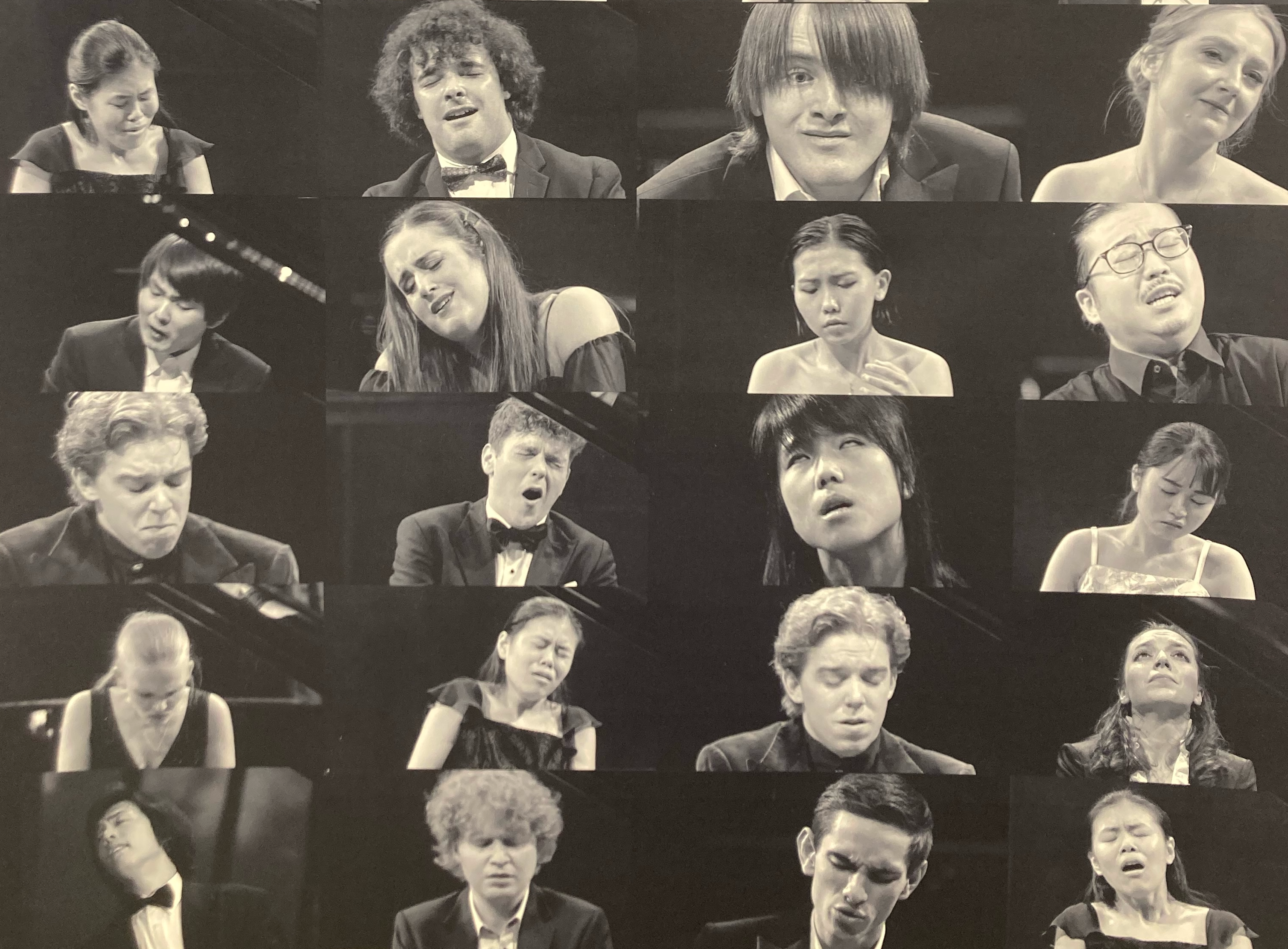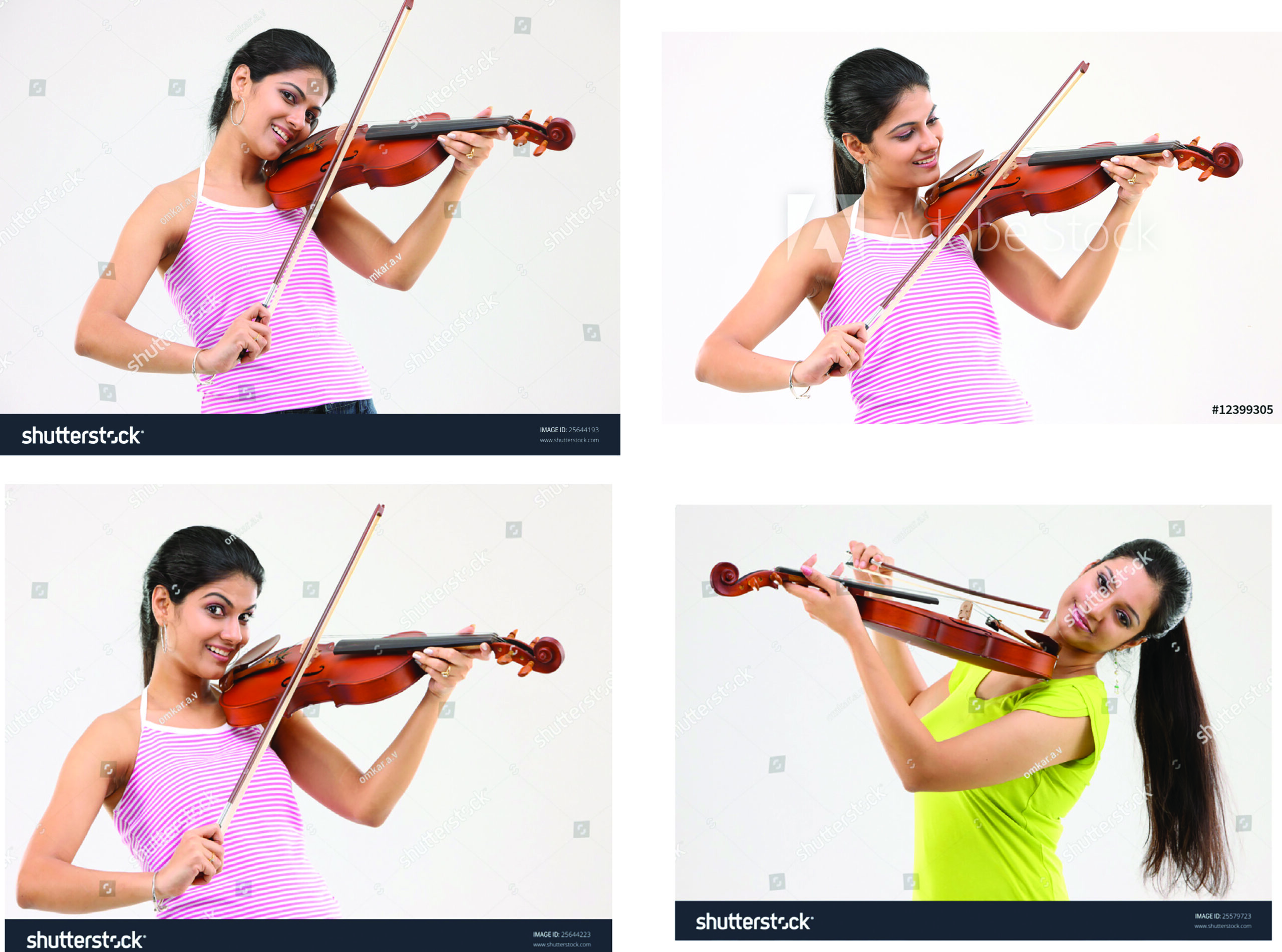Absolute Beginners: On Re-Skilling Music Instruction Books
Long before the ubiquity of the internet or YouTube tutorials, a budding musician would turn to “how to play” music books. Often although not exclusively assigned by schoolteachers or private tutors, these “how to play” books were overpriced and slim tomes. They were authored by academics and session musicians (or even the very person who might have assigned it) and typically organized into multiple volumes based on competency levels. All levels of “how to play” music books provide ample material for research into instructional pedagogy, but I’d like to focus here on the “beginner” book. Whereas intermediate or advanced competency books present methods and theories to guide one’s burgeoning musical capabilities, beginner books start from zero. This is what makes them fertile ground for consideration, critique, and creative re-thinking.
In musical beginner books, the presumption is that a musical player knows next to nothing about playing their instrument, including its history, the sound that it makes, and even how to hold it. Upon scrutiny, the sheer totalizing approach in these books—ways of standing and sitting, facial expressions, stretches for maximum repetition of exercises—seems to exceed the establishing of basic instructional methodology and extends to an entire program of bodily conditioning.
Consider the particularly astonishing example of Mark Rush’s Playing the Violin: An Illustrated Guide, which is, according to jacket copy, intended to guide beginners as they “systematically build the fundamentals of violin playing” through “proper set up” including “holding the violin” and “how to stand.”[1] To call Rush’s book “An Illustrated Guide” is modest—the guide is illustrated with over two hundred photographs, designed for the reader’s maximum mimicry. It features close-ups of open palms and closed hands, a dozen or so meticulous ways of resting one’s chin on a violin, and of course, right and wrong ways to stand (with comically exaggerated examples of bad posture). Rush writes that such attention to minute details are “fundamental components necessary for success” and that “the earlier these good habits are established the better.”[2] So, what are these good habits?

Fig. 1: Incorrect postures for holding a violin from Mark Rush, Playing the Violin: An Illustrated Guide. Photographs by Dana Duke.
The player should stand or sit as still as possible; there must be no swaying of the head or the body in cadence with the music, nor must there be any of the ungainly ridiculous rollings and contortions too often substituted for musical expression. A true musician will endeavor to produce an effect by his artistic rendering of the music of which he is the exponent.; not by acting or attitudinizing; he will look steadily and fearlessly, straight in front of him, either at his music or at his audience; his face will wear a calm, dignified and pleasant expression, free from all trace either of anxiety or desperate resolve; above all there will be no frowning, raising of the eyebrows, or casting upwards of the eyes.[3]
The above quote is from Richard S. Rockstro’s A Treatise on the Flute., While distinct from the “how to play” books proper, Rockstro’s Treatise is no less didactic in its ambitions for would-be performers. This lengthy book focuses not on the technical aspects of playing the instrument but on “attudinizing” factors. A flautist should not appear physically expressive, dare not move their body in an unconventional manner, and certainly must adhere to the utmost focus and awareness of their instrument should they be performing in a serious (or public) engagement. Lest we think such restrictions on movement or expression are reserved solely for flautists, consider this passage from Mark Hambourg’s How to Play the Piano.
Some players pick up the peculiarity of making extraordinary faces. [emphasis Hambourg’s] This is a very absurd fault, but it too often becomes a habit that is terribly hard to get rid of, because it is done quite unconsciously as a rule, and is also instigated by a desire to express the maximum of emotion, and sometimes provoked by the physical exertion necessary for the performance of a technical feat. The only remedy for “making faces” is to have a mirror hung in front of the culprit whenever he is practicing.[4]
This passage, odd and race-coded (what must Hambourg have thought of his contemporary, Fats Waller?), speaks to its age, but it nonetheless illustrates a prevailing tenet of “proper” musical performance. One must become like the instrument one is playing, in this case, become piano-like—which is to say, a stable, unemotive object.The musician should only be someone activating a musical instrument, a subject enacting an external object.
“Good habits,” as the above writings and suggestions for gestural mimicry might suggest, are about reducing the experience of contemporary musical play to exhibiting the historical norms of musical play. While gestural mimicry is common for a beginning player, it nonetheless puts a would-be performer in a legacy conversation with exemplars of musical play from the past. Opening this relationship between expert and beginner requires a would-be musician to dutifully sacrifice the comfort, at least at the beginning, of their familiar bodily movements, gestural habits, and potential daydreams. While not all “how to play” instructional books can be so meticulous in their proscribing of restrictions on bodily or expressive gestures, there is nonetheless a general commonality in their advocating of curtailment as a conduit towards musical excellence. In examining this curtailment, we might ask just what gets lost in the pursuit of musical excellence advanced on someone else’s (or historical legacy’s) terms?
Meticulous Meshing
Practicing the curtailment of behaviors or gestures for the sake of gaining expertise is discipline. A Treatise on the Flute’s issues a demand to fashion and condition the player’s body, at seemingly great lengths. This resulting encounter between the body and the object it manipulates is characterized by Michel Foucault as a “meticulous meshing”—in Discipline and Punish, Foucault writes that discipline meticulously refashions the body not just physically, but socially.[5] The body becomes part of a patchwork at the service of something else’s demands, which reduces its capabilities and makes it inextricably connected to the thing with which it interacts. We can easily observe examples of Foucault’s theorizing in the early twentieth century, when Fordism and Taylorism sought to standardize human movement for the sake of maximum efficiency. Through chronophotographic experiments documenting human movement and other semi-scientific research, the body was measured in its capacity to mimic a machine. For Ford, the goal was to machinate the automobile assembly line, but Ford’s assembly line worker shares with the professional musician this fervent desire to maximize, through standardization, efficiency in bodily movement in order to prevent mistakes. While there are differences of scale, both operate on a schema of formalized instruction, with gestures emptied at the service of a finalized product intended for someone else (likely a consumer): the automobile or an aesthetic expression from a musical instrument.
The failure in this model is made clear by its successes. Those who are not able—physically or otherwise—to implement the techniques, methods, and bodily standardization for musical play are represented by those who are. The scores of musical players who go on to various other socially legible musical achievements do so on the backs of those whom the world of music will not or cannot make use of. To say it simply, one cannot account for the world of musical excellence that we have without considering the exemplars who are its bad twin, the willfully opaque, aesthetically shambolic, difficult for market absorption, politically agitated, or normatively unbound. Thus, while musical instructional books demand and represent a cultural ecosystem that is hegemonic and homogenous, they also present a potential energy in their insistence on just what not to do.
Consider again Hambourg’s suggestion that that the budding pianist practice in front of a mirror. Such practice is meant to curb non-piano-like behaviors but could do the opposite of its intention, revealing what a body actually does in a charged or changed environment. The mirror exposes the immense effort required to extinguish the communion between the player and their instrument, providing immediate feedback of the relations as they appear. If the extraordinary faces that occur during piano playing are to be believed, becoming piano-like has another dimension, one that exceeds standardized technique. Each potential squint, eyeball roll, mouth opening, shoulder shimmy, or full body lean presents a minor resistance, even if consciously restrained, that alters the valence of what is supposed to occur. This is not to simply say that expressive playing counteracts technique, but that there is an intuitive resisting of “meticulous meshing” with an instrument. What other ways might one resist the standardization of musical play?
Unskilled
In his book, The Intangibilities of Form: Skill and Deskilling in Art After the Readymade, John Roberts writes that amateurs, generally defined here as someone either unable or unwilling to submit to bourgeois cultural authority, were aspirational figures for Modernist professional artists. For these artists, there was a desirable and illocutionary force in the amateur’s “forever mistranslating their object of desire” that destabilized standardized notions of skill and taste.” [6] The amateur could be a figure of admiration in their existence as exemplars of the failures of training or traditional competencies. We might consider the following images as exemplifying the potentials in this Modernist mode of thought.

Fig. 3: Girl with a Flute” (1), Girl with a Flute” (2).
Simply titled “Girl with a Flute,” the two images above come from a series of stock photographs taken by a Russian photographer named Uminov. In these photographs, this “Girl with a Flute” mimics playing the instrument by holding it unnecessarily high, as if it were a recorder or penny whistle, and further, as if she has discovered to play through her ear (in the instrument’s non-existent rear and frontal mouthpiece, no less). What is evidenced from these stock photographs, outside of the model and photographer’s clear lack of familiarity with flute performance, is an emphasis on expression over exactitude. Girl with a Flute may not know how to play or hold the instrument, but she does convincingly, if not absurdly, express her relationship to what is more than likely for this model, just another photoshoot prop.
Fig. 4: (Clockwise from top left) “Glamorous girl playing the violin,” “Young girl playing violin,” “Beautiful girl playing violin,” “Teenage girl with the violin.”
Consider the absurd photographs in another stock photo series above. The violin seems not to rest but leap off the model’s shoulders. The violin bow, held haphazardly, seems to nearly miss jutting into the model’s cheek. The facial expressions, almost grimacing, provoking, eyes popping out of the faces, hint at wild musical activity. Each model seems to be holding their respective instrument with a flagrant disregard for propriety, and if these photographs were culled from a live performance, we might imagine a concert of reckless abandon.
Skeptics will hone in on that “might” in that last sentence. Here, “might” is right, as these photographs are not performance documentation, or even “art” in that hallowed designation we usually reserve for more thoughtfully composed or chosen visual entities. These are stock images, and with that title comes a specific function of use (the coveted “license”). But where would these images possibly find a place to exist outside of the internet? A music textbook? A musical retreat? It’s unfathomable that any of these images could be used to represent musical playing, and this is maybe where their value might be found. What strange combinations of musical activity might take place if one were to discover these images in a musical beginner book?
Deskilled
By the 1960s and 70s, a small but influential number of artists and musicians, many of them from experimental music and performance milieus, stretched the Modernist assimilation of the amateur further. Not content to simply valorize the creative work of the amateur, these artists and musicians extended their interests into any activity whatsoever. Galvanized by permissions granted by thinkers such as John Cage, or motivated by musicians in loft jazz scenes or movement artists like the Judson dancers, these artists and musicians attempted to rewrite notions of amateurism altogether, rejecting professional training through a gradual rewriting of conventional skillsets. This form of deskilling, a term borrowed from but distinct from its semi-learned brethren on the Ford assembly line, was a conscious disciplinary recalibration, and was picked up as a meaningful strategy by post-War artists for a myriad of reasons.[7] Expert double bassist Benjamin Patterson became an experimental musician, performance artist, and conceptual object maker when he was refused entry to U.S. orchestras on account of his race; mentee of Karlheinz Stockhausen and serial musician Nam June Paik abandoned classical composition for Fluxus performance and experimentation with television sets and video tapes; Yvonne Rainer recalibrated her dance training to capture the movement and rhythms of daily life; John Cale, Rhys Chatham, and Brian Eno altered their skillsets to meet the demands of respective rock and punk scenes (or, conversely, attempted to translate their experimentalism into these musical networks), as did dozens of other fine art students in the 1960s and 70s.[8]
A deskilled artist of particular relevance for this essay is George Brecht, a chemist who abandoned his corporate consulting for a lifelong dedication to reconsidering the oft overlooked or conventionally unremarkable. Brecht’s work took on a myriad of forms—inaccessible store front spaces, redrawn maps, cryptic solitaire decks, occasional objects—but he is perhaps most well-known for his Event Scores. Event Scores consist of written text, occasionally explicitly instructive, that, while avoiding conventional music notation, were concerned with musical matters such as time and timbre. Scored with an explicit emphasis on the performer (instruments, while mentioned, seem to be secondary concerns), Event Scores honed in on the heretofore overlooked matters of musical life: “shaking hands” from String Quartet (1962), “(putting it down)” in Solo for Wind Instrument (1962), “disassembling” and “assembling” making up Flute Solo (1962). In his isolating and showcasing of extramusical activity, Brecht’s Event Scores offer up a way of thinking about music-making without making any music whatsoever. The assembly of a flute is paramount to any flautist’s performance, so why must this fact go unnoticed or uncelebrated?
The relative accessibility of Event Scores caught on as a workable form for performers in the 1960s, their format most notably being utilized by those affiliated with Fluxus, a loose international group of performers, writers, musicians, and artists who were bound by a collective desire to engage with a type of expanded arts practice. In 1963, Fluxus impresario George Maciunas self-published a small editioned boxed collection of Brecht’s Event Scores titled Water Yam, which circulated its way into the hands of experimentally minded artists, musicians, and particularly in England, teachers. Following a turn toward a more progressive and experimental model of pedagogy in the English arts education system that began in the early 1960s, a strand of adventurous composers and musicians, shunned by most music conservatories, found themselves teaching at fine arts colleges. Composer educators such as Gavin Bryars (Portsmouth College of Art, Leicester Polytechnic), Cornelius Cardew (Royal Academy of Music, Morley College), Michael Nyman (Kings College, Trent Polytechnic), and Michael Parsons (Slade School of Art, Portsmouth College of Art), found warm reception to their ideas from the visual arts students who populated their classes, classrooms, and visiting lectures.
Brecht (who also taught at Leeds College of Art in England briefly in the late 1960s) and his work was extremely important to these composer educators, with Cardew praising Water Yam as “a course of study, and following on that, a teaching instrument.”[9] For these composer educators such as Cardew, Water Yam provided their students exercises in the distinction between language and object (conceptual art), but also provoked them to consider limitations in order to better understand how to stray, which is to say, learning (“a teaching instrument”). Brecht’s Event Scores are puzzles that dismiss (or enhance) the standard rational language of puzzles, in which the goal is a reasonable outcome, in favor of both acknowledging and giving license to a respective interpreter/performer’s aim at “solving” as a productive exercise. Water Yam, when considered as a primer for students interested in music making in an expanded sense (the relocation of seemingly insignificant musical gestures as primary ones) is a musical beginner book of a different sort, one that both exceeds conventional instruction but can also allow us to consider it anew.
As the “How to Play Violin” images make clear, so much of musical playing begins with the very minor gestures that Brecht was valorizing—a grasp, pluck, poke, squeeze, touch. A major feature of the Event Scores is their totalizing effect. They can occur in an endless combination of ways, in any place, anytime. Thus, while Brecht’s focus was on the insignificant, he simultaneously revealed how the minor gesture can be a major thing in its possibilities (consider again, the mirror example above). This way of thinking can be extended to the reading of the small movements—standing, sitting, holding, facial expressions—we encounter in musical beginner books. Within these small movements we can find not just fragments of processes for learning, but a whole world to play within. Could we re-read a diagram of the proper handling of a clarinet as a poetic invitation for activity? How might a warmup stretch for flautists or violinists become a dance?[10] Can we valorize images of improper sitting postures as miniature performances that exceed their attempts at bodily conditioning (and body normativity in general)? Questions such as these are not designed simply to provoke an endless array of new categories to populate with equally new rules, restrictions, or market logics that deaden the force of what these minor gestures can do. Further, I am not interested in attempting to rekindle the romanticism of mid-20th century vanguard super categories in which perceived hierarchies were abolished more in theory rather than reality.[11] Rather, I want to imagine the creative rereading of musical beginner books as a potential site to rethink the primacy of given skillsets in general.

Richard Hahn and James D. Ployhar, Practical Hints on Playing the Flute (California: Belwin-Mills Publishing, 1983).
Reskilled
To deskill is to reskill. Deskilling is as much about unlearning as it is about a potential disciplinary reorientation from music to art. If a flautist abandons Debussy for Water Yam we could say that they are in a simultaneous state of unlearning certain behaviors to learn new ones. The result of this activity is more often than not becoming “interdisciplinary,” to place the glow of a learned discipline onto another. Rather than simply reskill to create new combinations for inevitable evaluation, or satiate some fickle tropism, how might we find what artist and author Erin Manning calls “new processes that will likely create new forms of knowledge that may have no means of evaluation within our current discourse models.”[12]
As I have illustrated, music beginner books can outline in meticulous detail just what not to do, and it is perhaps here where we can find an incubator for “new forms of knowledge.” A mistake always exceeds an evaluative model in its aberrance. It is conventionally productive only when it draws attention to an undesired effect, e.g. a diversion from what is expected. In the mistake’s revealing of the fragility of social rhythms there is a potential to move beyond self-edification and to consider how certain systems maintain and attempt to tame the uncommon. Hitting the wrong note on a piano key can be the disruption of an overall piece of music but it can also present an opportunity to think how this piece of music (or any piece of music) can be made unbound with an acceptance or embrace of one’s own fallibility.
To be sure, I am not suggesting that one embrace mistakes to join the chorus of those proudly incapable or unwilling to learn whose song drowns political discourse and leaders (particularly in the United States). It is important to accept that mistakes are necessary to make sense of the world, that understanding how and why you were wrong is a form of learned humility. Refusing to admit that you are incapable of something is difficult (and out of fashion) in our contemporary moment. Confirming incapability today is to assume a form of vulnerability that is tethered to an admission of unmarketability and thus, dire consequences in an economic system that only prizes one’s capability to succeed competitively. The wild improvisations, communions with one’s body, and joyous reveling in one’s inabilities that could arise from certain deskilled/reskilled activity of the 20th century have fallen out of fashion in our now times.
The invention of resistant forms may not necessarily lead to liberation, but altering the stability of a given event (what mistakes can do) can produce new knowledges (conventional or otherwise). It’s important to remember that a mistake is also an improvised or reflexive gesture. When a drummer drops their drumstick mid-performance this action is an unexpected addition to the overall performance. Yet, to put improvised or reflexive gestures at the service of a certain type of performance is to deny them their own due consideration (this is what Water Yam is about). The drummer’s accident recovery time is how their skill might be measured, e.g. how the movement (the dropping of the drum stick) didn’t alter the event (the drumming). To reconfigure this accident as not the event altering the movement but vice versa, we’d have to craft the conditions in which accidents, mistakes, improvised or reflexive gestures were allowable, in which types of movement weren’t predetermined in a given situation. This matters in that so much of what we call “art” is about acknowledging the flux of relations, space, and time, but so often it limits this totality, opting for principles of organization and resemblance, which is to say, aligning with a normative history of “this is” and “this isn’t” (so much of what “how to play” music books are covertly about).
The cyberneticist Morse Peckham writes that art is characterized not by order but by disorder, and that while it can tell us little about the world that we might not find elsewhere, it nonetheless serves a function as a socially accepted form of creating chaos. Peckham writes,
We rehearse for various roles all our lives. We rehearse our national, our local, and our personal styles. These things we rehearse so that we may participate in a predictable world of social and environmental interaction. But we must also rehearse the power to perceive the failure, the necessary failure, of all those patterns of behavior…Art is the reinforcement of the capacity to endure disorientation which makes innovation possible.[13]
For Peckham, the potential disorderliness of art has the practical application of showing us the poverty of our own thinking (the “necessary failure” of ordering behaviors). Like art, so often the variations that ripple through and change or alter the event, which is to say, give it an untamable quality, are hidden from view. What might happen if were to imagine the performance of knowledge—one’s skills—as unfixed? What could occur if the event in which the performance of knowledge was designed to produce new knowledge that could not anticipate movement? What conditions might have to happen to allow for such an event, what rhythms of daily life would have to be reconsidered? While imperfect, the disrhytmic and arrhythmic gestures proposed by Brecht and enacted by Rainer (among many others) serve as admired attempts at imagining non-practical skillsets that might spring us to consider just how fixed we might be on our standard ways of operating in the arts (if not the world).
The reskilling of musical beginner books (or really any “how to” book) can serve as a thought experiment, a burgeoning method for crafting the conditions of being inside and among the event, without knowing what one might get ahead of time. Attaining mastery means surpassing “good,” “good enough,” “unable,” or “unwilling.” When professionalization, largely the raison d’être for “how to play” books, is disregarded, the bodily meshing becomes less meticulous. Either for politics, critique, or inability, a player refuses conditioning when they consider proper play optional. New or unexpected processes can emerge out of this refusal. Perhaps most importantly, the refusal denies power’s demand for automation. Such a refusal is unpredictable, undisciplined, and largely un-useful for capital—even creative capital.
[1] Rush writes in his introduction to the book, “Setup [sic]…refers to the basic physical elements of violin playing – how one holds the violin and bow, one’s posture and position, basic movements left and right, and so forth. These are the fundemntal components necessary for success…Because the body readily remembers first sensations when doing something new, those first sensations are critical, as they easily become future habits or tendences.” Mark Rush, Playing the Violin (London: Routledge, 2006), ix.
[2] ibid.
[3] Richard S. Rockstro, A Treatise on the Construction, the History, and the Practice of the Flute (London: Rudall Carte and Co., 1928), 420.
[4] Mark Hambourg, How to Play Piano (Philadelphia: Theodor Presser Company, 1922), 74.
[5] Michel Foucault, Discipline and Punish (New York: Random House, 1991), 153.
[6] John Roberts, The Intangibilities of Form: Skill and Deskilling in Art After the Readymade (London: Verso, 2007), 158. .
[7] In economics, deskilling refers to the ways in which skilled labor is fragmented by new technologies (automation, segmenting of human labor on the assembly line, etc.). Generally, in art, deskilling can refer to the surrender of technical competencies for a variety of conceptual reasons. They overlap, albeit in largely different scales, in their consideration of human labor (economic investment in human capital and production outsourcing in art (Duchamp)).
[8] For a history of this subcultural reorientation see Simon Frith and Howard Horne, Art into Pop (London: Routledge, 1987).
[9] Cornelius Cardew, in a note to a Brecht concert at the Royal Court Theatre, London, on 22 November 1970; also in Julia Robinson, “George Brecht: Biography and Bibliography” in Thomas Kellein Julia Robinson, George Brecht (eds.) George Brecht: works from 1959–73 (London: Gagosian Gallery, 2004), 65. To see how Cardew’s students considered the Event Score on their own terms see: The Scratch Orchestra, Nature Study Notes (self-published, 1975), and Scratch Anthology (London: Experimental Music Catalog, 1975).
[10] The movement artists and dancers Amanda Maraist and Camille Casemier did this based on piano playing diagrams from Seymour Fink’s Mastering Piano Technique: Understanding Basic Technical Movements for my exhibition, How to Play Piano at Comfort Station, Chicago, October 2022. Documentation can be found here: https://vimeo.com/761173491.
[11] For a critique of experimental categories see Benjamin Piekut, Experimentalism Otherwise: The Avant-Garde and Its Limits (Berkeley: University of California Press, 2011).
[12] Erin Manning, The Minor Gesture (Durham: Duke University Press, 2016).
[13] Morse Peckham, Man’s Rage for Chaos: Biology, Behavior, and the Arts (New York: Chilton Books, 1965), 313-314.





Dilettante Mail
Get updates from us a few times a year.